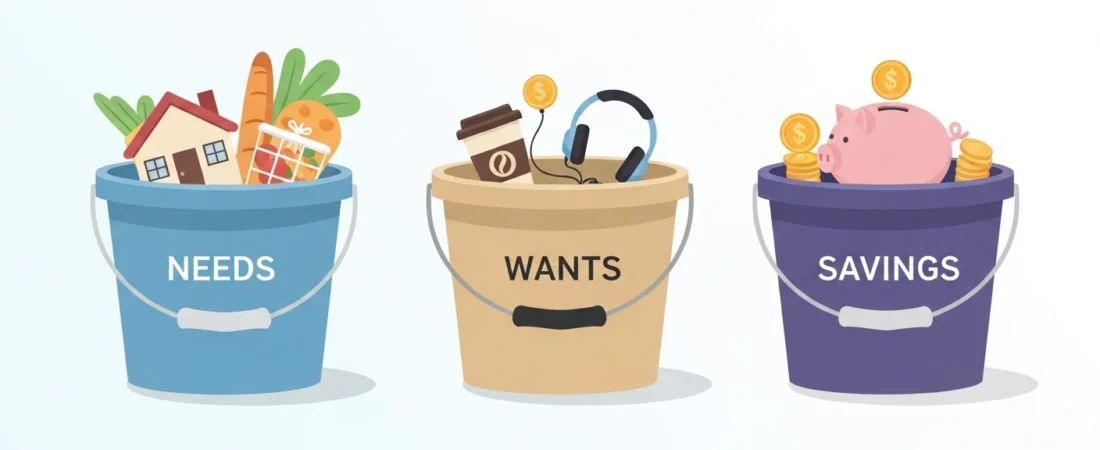For many Americans, the word “budget” often conjures images of rigid spreadsheets and a feeling of deprivation. This perception can deter individuals from engaging with their finances, leading to missed opportunities for growth and security. However, effective money management does not require extreme austerity. Instead, it can involve a framework that offers both structure and flexibility. The 3-Bucket Budget presents one such approach, providing a straightforward method to allocate funds without imposing undue restrictions.
This budgeting strategy simplifies financial planning into three primary categories: Needs, Wants, and Savings. Each bucket serves a distinct purpose, guiding your spending and saving habits in a balanced manner. The beauty of this system lies in its adaptability; it acknowledges that financial circumstances and priorities can shift, allowing individuals to adjust their allocations as needed.
Bucket One: Needs
The first bucket, Needs, encompasses all essential monthly expenses. These are the non-negotiable costs that keep your household running and your life stable. Think of items such as housing payments (rent or mortgage), utilities (electricity, water, gas), groceries, transportation costs, and necessary insurance premiums. Healthcare expenses and minimum debt payments, like those for student loans or credit cards, also fall into this category.
When establishing your budget, accurately identifying these core expenses is paramount. Consider every recurring bill and essential purchase. A helpful guideline often suggests dedicating approximately 50% of your after-tax income to this bucket. This allocation provides a solid foundation for covering your most basic financial obligations without overextending yourself. Regularly reviewing these expenditures ensures that they remain within reasonable limits, freeing up resources for other important areas.
Bucket Two: Wants
Following the essential “Needs,” the second bucket is dedicated to Wants. This category includes discretionary spending—items and activities that enhance your quality of life but are not strictly necessary for survival. This might involve dining out, entertainment subscriptions, hobbies, new clothing (beyond what’s essential), vacations, or personal care services.
The “Wants” bucket is where many traditional budgets can feel restrictive, leading to a sense of deprivation. The 3-Bucket Budget, however, explicitly designates funds for these desires. A common recommendation is to allocate around 30% of your after-tax income to this category. This portion allows for enjoyment and personal enrichment, preventing the feeling that your budget is solely about sacrifice. The ability to freely spend within this designated amount can significantly reduce financial stress and foster a healthier relationship with money.
Bucket Three: Savings
The final and equally crucial bucket is Savings. This category is vital for building financial security and achieving long-term goals. It includes contributions to an emergency fund, retirement accounts (such as a 401(k) or IRA), investments, and funds set aside for future large purchases like a down payment on a home or a new vehicle. Debt repayment beyond minimums also fits here, as accelerating debt payoff can be seen as a form of saving on future interest.
Experts often advise dedicating approximately 20% of your after-tax income to savings. While this may seem challenging initially, even small, consistent contributions can accumulate significantly over time. Prioritizing savings helps to create a safety net for unexpected events and paves the way for future financial aspirations. The discipline of regularly funding this bucket empowers individuals to take control of their financial future, rather than feeling controlled by it.
Embracing Flexibility and Control
The 3-Bucket Budget provides a clear, actionable framework for managing personal finances. Its simplicity makes it accessible, while its inherent flexibility ensures it remains relevant through various life stages and financial shifts. By consciously dividing your income into “Needs,” “Wants,” and “Savings,” you gain a comprehensive overview of your financial landscape. This approach fosters a sense of control, transforming budgeting from a chore into a tool for empowerment.
Instead of feeling constrained, individuals discover freedom within defined parameters. This method encourages mindful spending and strategic saving, ultimately leading to greater financial stability and peace of mind. Have you considered how a structured yet flexible approach like the 3-Bucket Budget might transform your financial management?
